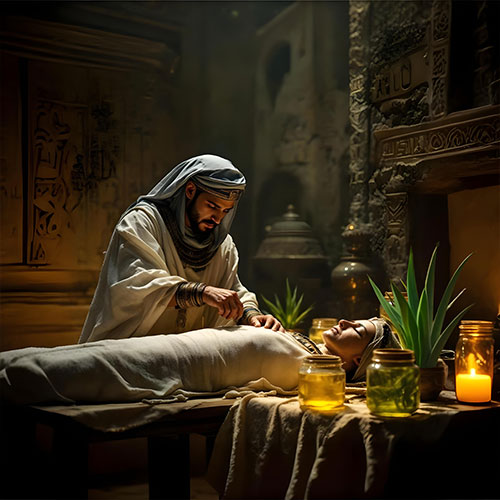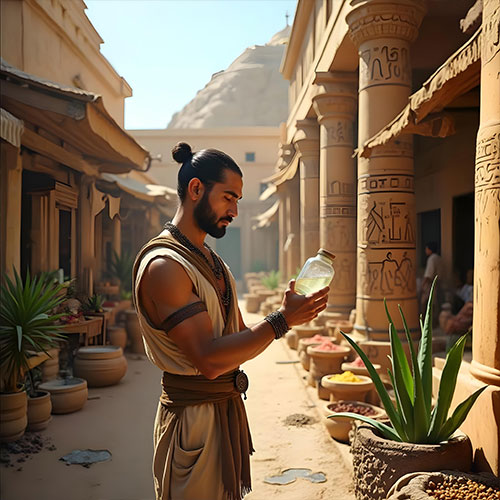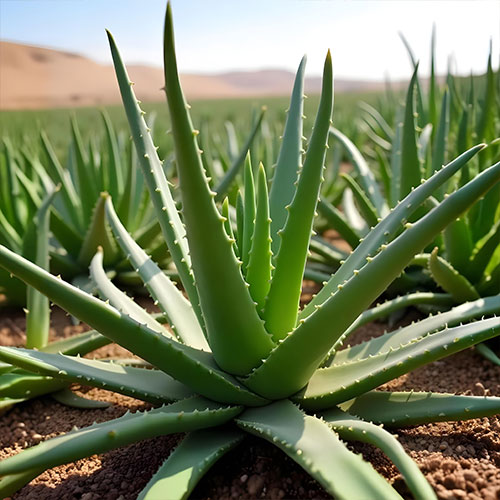




Aloe Vera, often referred to as the “plant of immortality,” has fascinated humanity for centuries. One of its most remarkable features lies in its ability to retain moisture, even in the harshest environments. This unique characteristic stems from the plant’s thick, fleshy leaves, which store life-sustaining water in transparent, gel-filled cells. These cells act as natural reservoirs, allowing the plant to endure prolonged periods of drought. The glistening, dew-kissed surface of an Aloe Vera leaf is more than a sign of hydration; it is a testament to nature’s mastery of preservation.
In the heart of ancient Egypt, Aloe Vera held a revered place in the rituals of preservation. The Egyptians, known for their advanced embalming techniques, utilized Aloe Vera as a key ingredient in preparing the deceased for the afterlife. Its antibacterial and antifungal properties played a vital role in preventing decay, allowing the body to remain intact for centuries. Historical depictions often show jars of Aloe Vera among the embalmer’s tools, emphasizing its importance. This practice highlighted the plant’s extraordinary capabilities and cemented its symbolic association with longevity and eternal life.
Preservation wasn’t limited to embalming; it extended to the plant itself. Ancient civilizations developed methods to dry Aloe Vera leaves carefully. After harvesting, the leaves were washed and laid out under the sun, a process that removed moisture while retaining the plant's potent medicinal qualities. This drying method prevented microbial growth, effectively “preserving” the plant for long-term use. Sun-dried Aloe Vera could be stored for months, providing a consistent supply of healing remedies for wounds, skin conditions, and digestive issues.
In ancient marketplaces, merchants played a crucial role in maintaining the quality of Aloe Vera. These traders were well-versed in inspecting the plant for its texture, color, and aroma, ensuring that only the best leaves or gel were sold. Buyers sought the purest Aloe Vera for its healing and preservative properties, making quality control an essential part of its trade. This emphasis on purity and potency ensured that Aloe Vera maintained its reputation as a cornerstone of natural medicine.
From its role in ancient rituals to its continued use in modern skincare and wellness, Aloe Vera remains a timeless symbol of preservation. Its ability to sustain life and health, even in challenging conditions, underscores its enduring relevance. Today, while we no longer embalm with Aloe Vera, we carry forward its legacy by harnessing its natural properties in ways that resonate with both tradition and innovation.
Nature’s preservation system lives on, reminding us of the beauty and resilience found within its green, glistening leaves.
Coming Up Next:
Aloe Vera’s Global Journey From the sun-soaked deserts of Africa to the bustling markets of ancient Asia, Aloe Vera’s remarkable properties have made it a globetrotter through the ages. In our next chapter, we explore how this humble plant crossed continents, influencing traditional medicine, beauty rituals, and wellness practices worldwide.
Discover how Aloe Vera became a universal symbol of healing and rejuvenation, embraced by cultures across the globe. Stay tuned for an inspiring journey through time and borders!